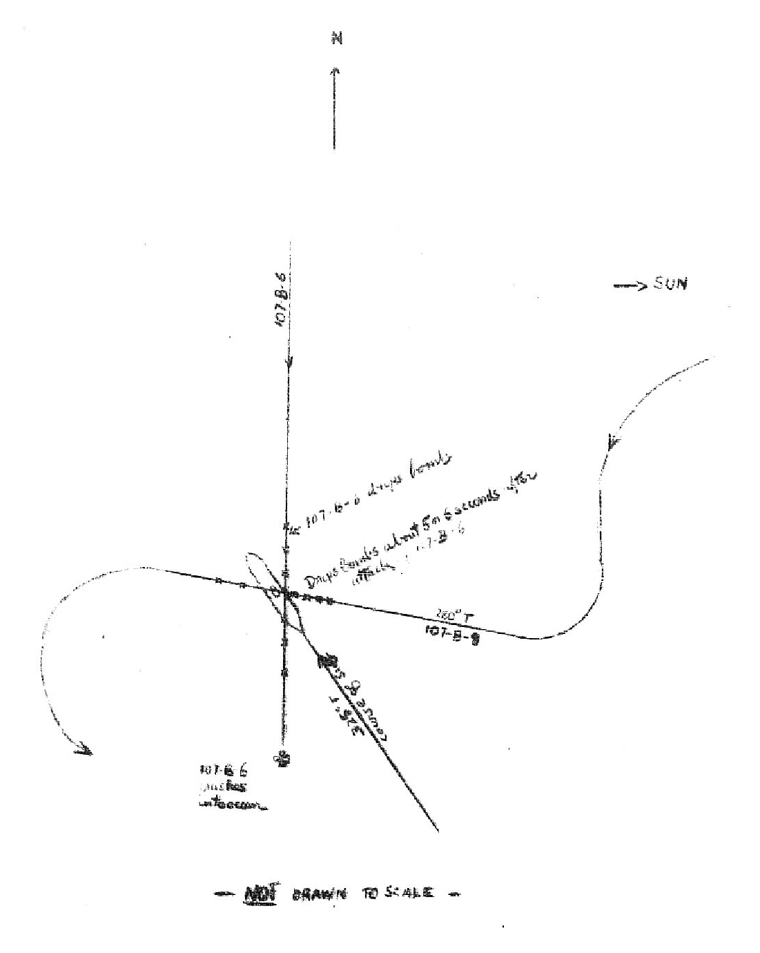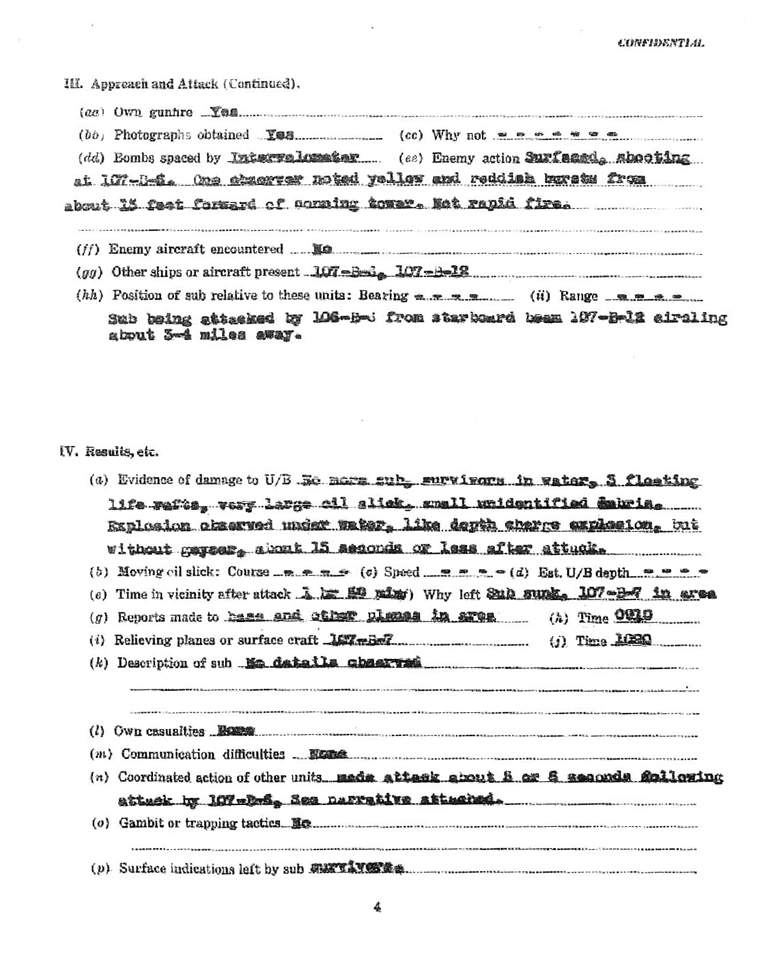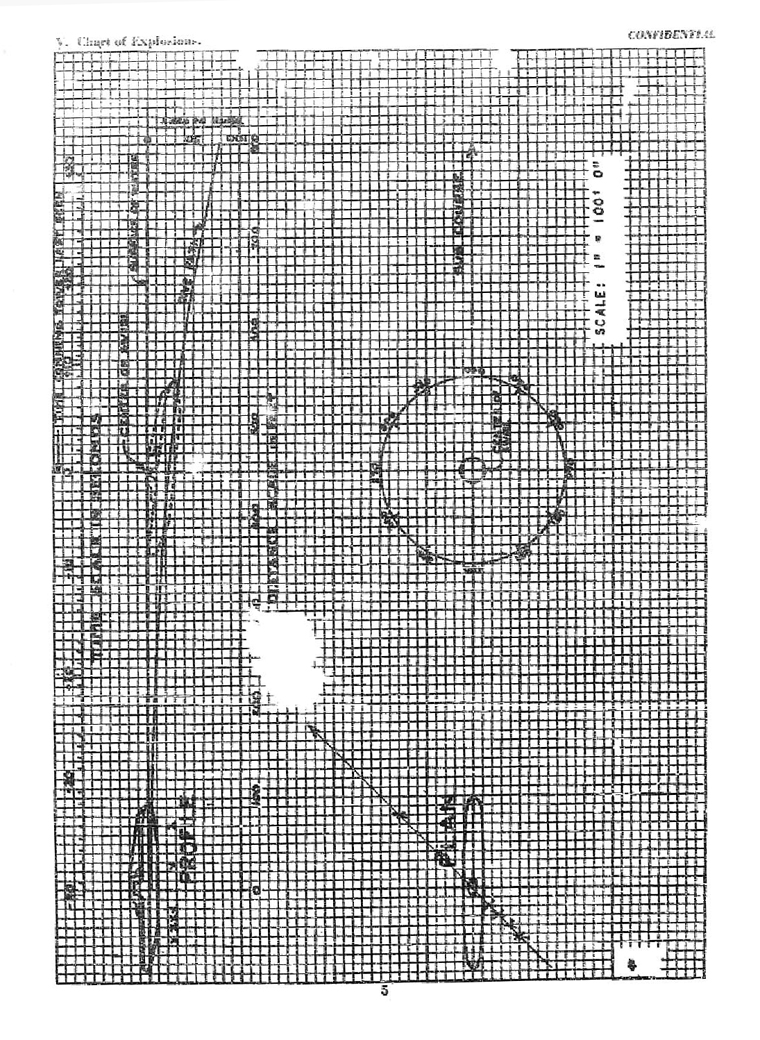107-B-7 LCDR Renfro Turner, Jr. 22 July 1943 VB-107 ASW-6 #2
| ASW-6 #2 covers LCDR Turner's sighting of U-598 and his first attack with 6 depth charges at 0828P on 22 July. He attacked again with his 3 remaining depth charges at 1059P. (his second attack is covered in VB-107 ASW-6 #3 below) |
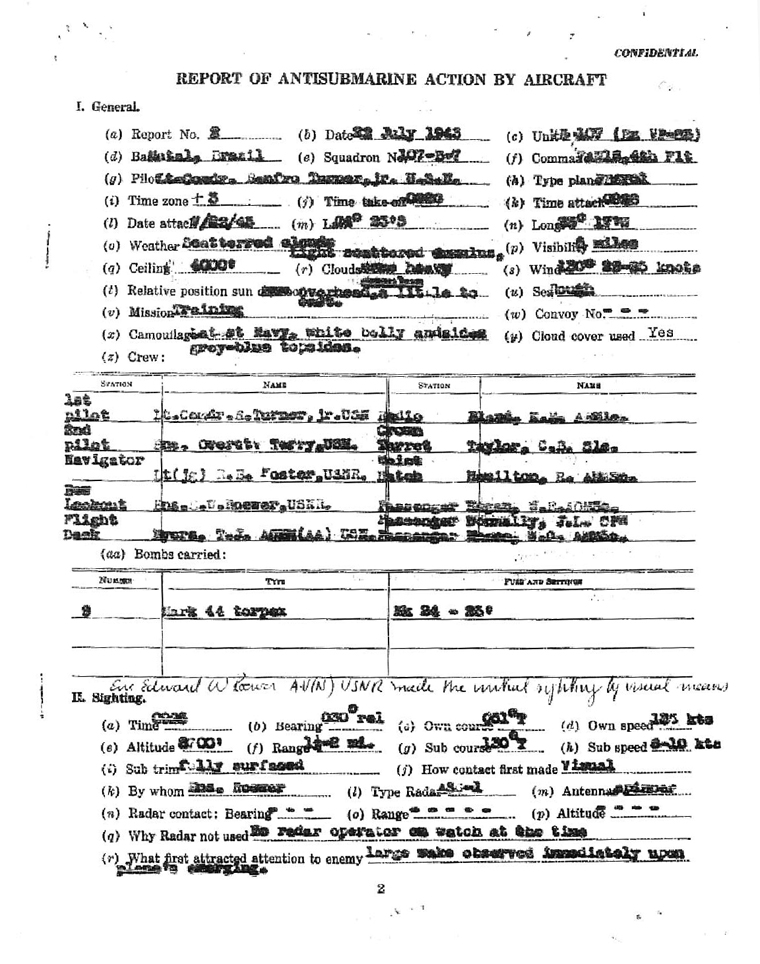
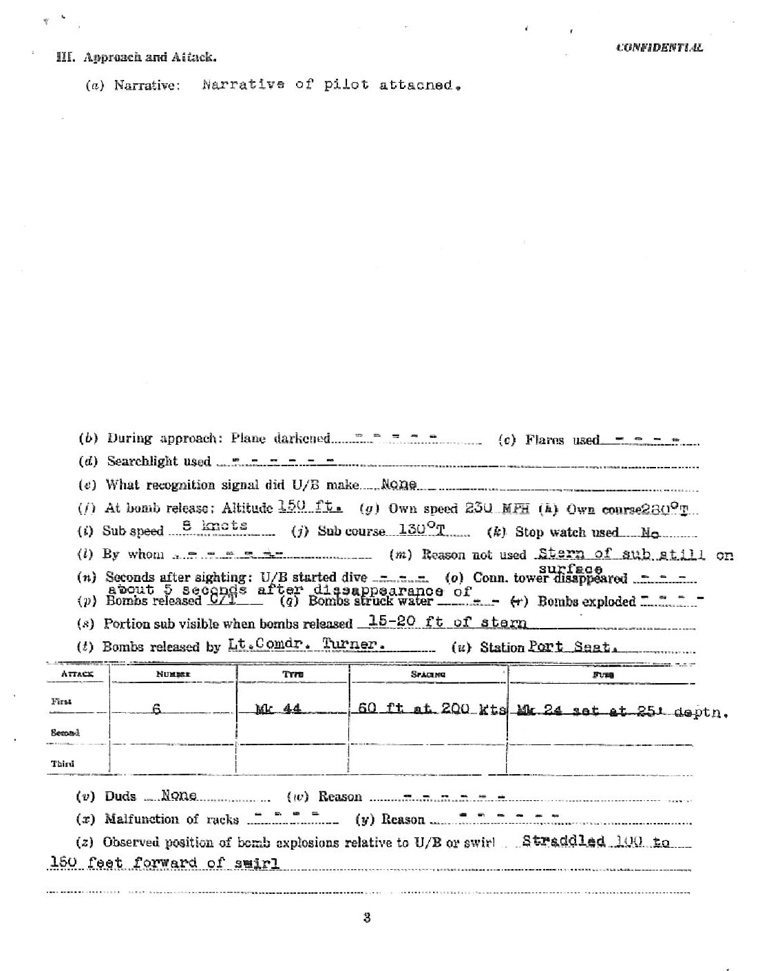
- PILOT'S NARRATIVE - |
||
| At 0925 Peter, July 22, 1943 while flying at an altitude of 8700 feet on a true heading of 0810 the bombardier, Ensign Rosser, reported a wake at one o'clock (about 10 degrees relative bearing) distant one and a half miles. At this time we had just emerged from between two strats of clouds, heavy cumulous below us from about 5500 to 8000 feet and also stratus above us with bottoms at 9000 feet. Visibility below the clouds was limited to about 5 miles by a surface haze. We immediately made a right turn to bring sighted object within the view of the pilot in the left side of the cockpit and opened the bomb bay doors. As the plane began to turn the bombardier reported that the wake was a submarine and we pushed over in a steep glide. The submarine quickly came into view and appeared to be a German U boat of the 740 ton class fully surfaced on a southeasterly course at a speed of 8 to 10 knots. We continued the turn back into the cumulous clouds where we reversed our heading immediately, emerging this time at an altitude of 3500 feet at an airspeed of 230 miles per hour and passed over the submarine on a northwesterly heading. The submarine apparently sighted us for the first time at this point and began a crash dive. We executed a wing over and attacked from his starboard quarter with a target angle of 150. A stick of six MK 66 depth bombs fused to explode at a depth of 25 feet was dropped from an altitude of 150 feet with an intervalometer setting of 80 feet spacing at 200 knots. The air speed at the time of drop was 200 miles per hour (about 205 knots). About 15 feet of the stern of the U boat was visible when the plane passed over its track line. No stop watch was used but the Navigator counted the time as follows: 1001, 1002, etc to 1007 from the time of submergence of the conning tower until the plane passed over the track line. We crossed the track line about 100 to 150 feet forward of the swirl. | ||
| After the drop was completed the plane was maneuvered to make another run from the port beam. We hoped that our first attack had been successful and anticipated that the sub might resurface immediately, in which case it was intended to attack again using the three remaining bombs. However, the only visible evidence was the swirl, the disturbed area of water resulting from the explosion and two smoke lights. These smoke lights had been taped to the tails of the first and last bombs in the stick. It is believed that they broke loose in the slip stream and marked fairly accurately the point of entry of those two bombs. They were both contained in the area of disturbed water, the first just in the starboard edge and the other 50 to 100 feet from the port edge (port and starboard of the sub.) | ||
- PILOT'S NARRATIVE - |
||
(CONTINUED) |
||
| The disturbed area of water was nearly tangent to the forward edge of the swirl extended into it a few feet. It is believed that the explosions straddled the submarine forward of the conning tower. The dive of the submarine was rapid and steep, probably the steepest safe dive possible. It is believed that the bombs may have exploded over his forecastle which might explain the absence of conclusive evidence of damage. There were slight oil streaks in the disturbed water but they very probably were part of the bomb residue. | ||
| To establish timing I'll recapitulate. The sub was sighted at 0925. An S turn was made toward him, away along his course line and back over him into the sun, losing altitude. This maneuver required 1-1/2 to 2 minutes at the end of which were were over the sub at about 3500 feet. Also at approximately this time the sub sighted the plane and began his dive. About 85 to 90 seconds later the plane had completed a wing over and dropped and was again passing over the sub. | ||
| Subsequent to the attack we remained at the scene for approximately 20 minutes. We hoped to see further evidence of damage and thought it probable that the submarine would be again forced to surface very close to the point of submergence. After 20 minutes we abandoned hope of sighting wreckage and began flying a hold-down square ten miles on a side with its center at the attack. | ||
| For an account of subsequent events see VB-107 ASW-6 report #3. | ||
| At no time was the plane in such a position that fire could be opened on the surfaced submarine without disclosing our presence and thus make it possible for the sub to escape. Consequently no guns were fired either by our plane or by the submarine. | ||
- 2 - |
||
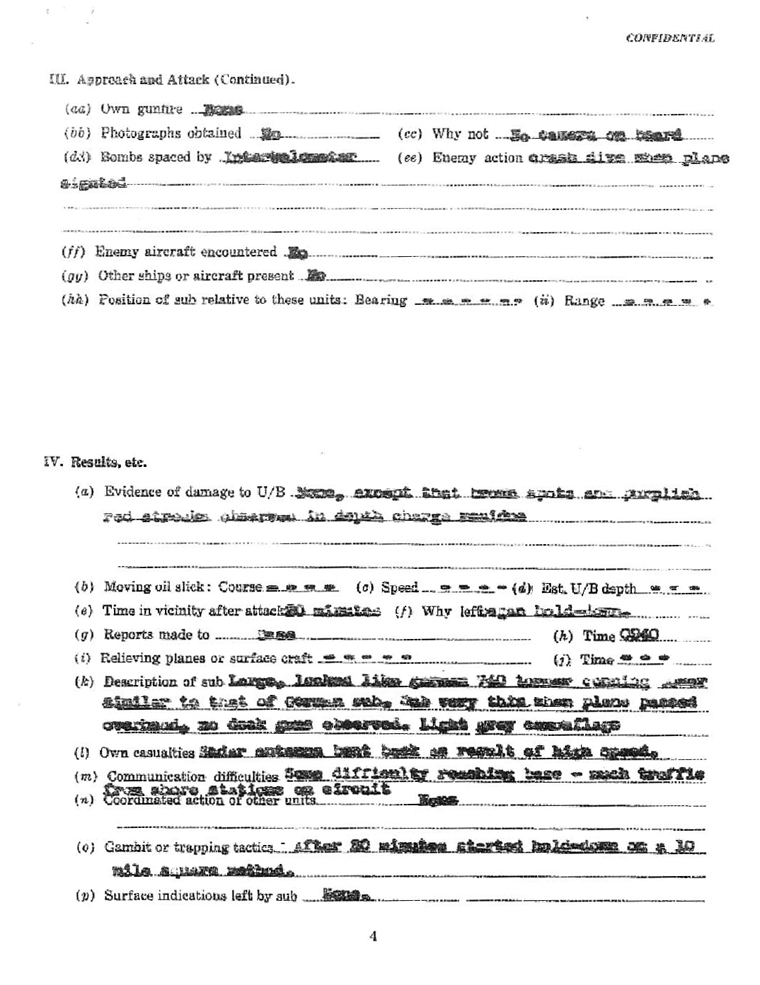
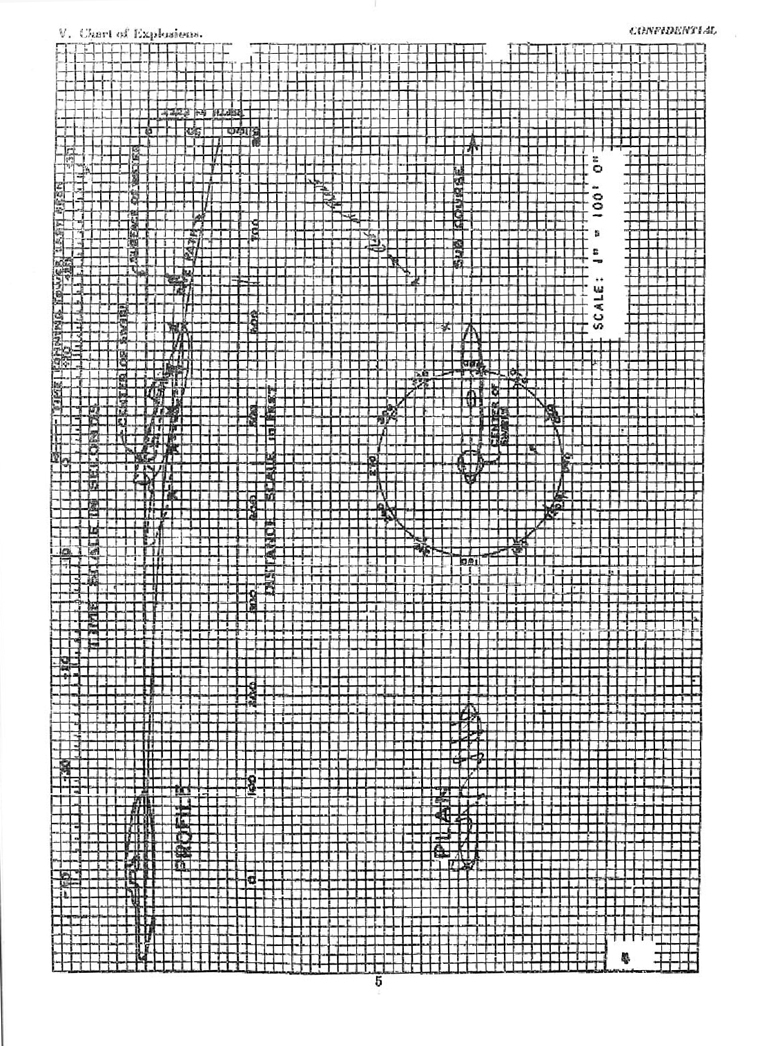
CHRONOLOGY OF EVENTS JULY 22-23 |
||||||||||||||||||||||||||||||||||||||||||||||||||||||||||||||||||||||||||||||||||||
(ALL TIMES PETER) |
||||||||||||||||||||||||||||||||||||||||||||||||||||||||||||||||||||||||||||||||||||
|
||||||||||||||||||||||||||||||||||||||||||||||||||||||||||||||||||||||||||||||||||||
CHRONOLOGY OF EVENTS JULY 22-23 |
||||||||||||||||||||||||||||||||||||||||||||||||||||||||||||||||||||||||||||||||||||
(CONTINUED) |
||||||||||||||||||||||||||||||||||||||||||||||||||||||||||||||||||||||||||||||||||||
(ALL TIMES PETER) |
||||||||||||||||||||||||||||||||||||||||||||||||||||||||||||||||||||||||||||||||||||
|
||||||||||||||||||||||||||||||||||||||||||||||||||||||||||||||||||||||||||||||||||||
CHRONOLOGY OF EVENTS JULY 22-23 |
||||||||||||||||||||||||||||||||||||||||||||||||||||
(CONTINUED) |
||||||||||||||||||||||||||||||||||||||||||||||||||||
(ALL TIMES PETER) |
||||||||||||||||||||||||||||||||||||||||||||||||||||
|
||||||||||||||||||||||||||||||||||||||||||||||||||||
107-B-7 LCDR Renfro Turner 22 July 1943 VB-107 ASW-6 #3
| This report covers LCDR Turner's second attack on U-598 at 1059P. This attack occurred immediately after LTJG Burton's attack in 107-B-8 ( LTJG Burton's attack is covered in VB-107 ASW-6 #4). |
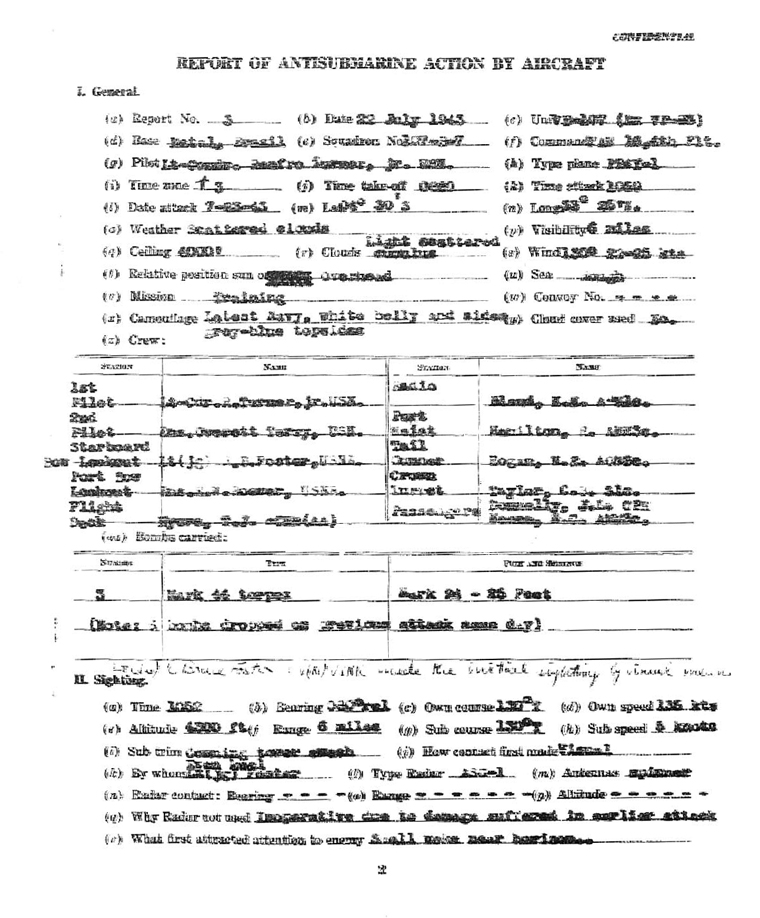
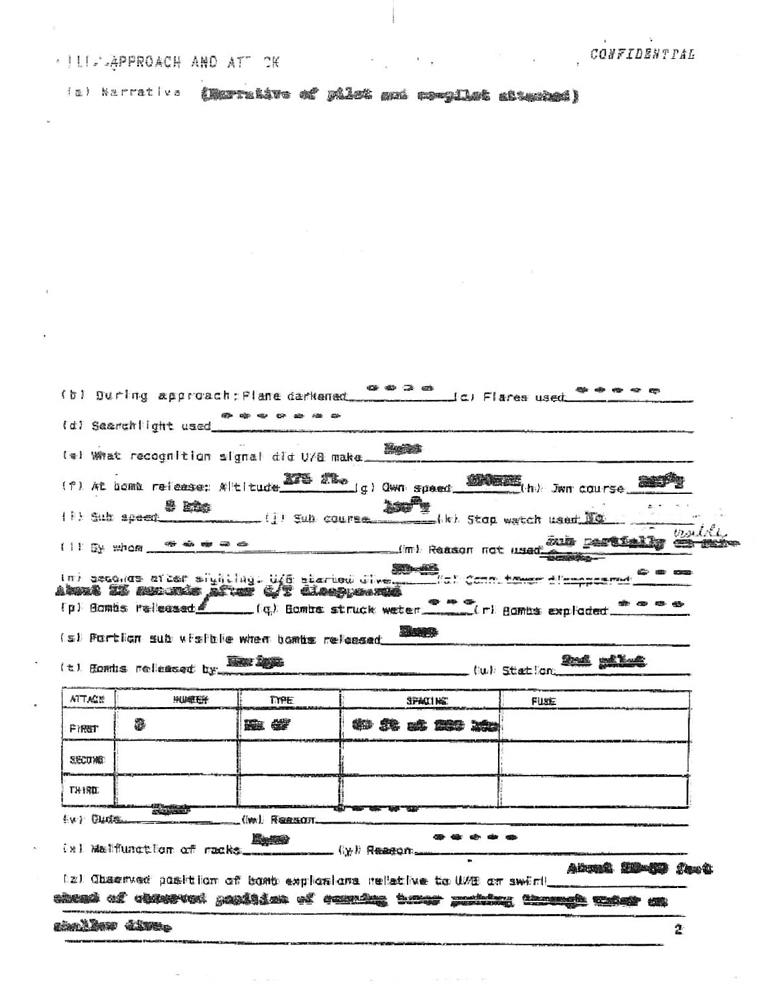
PILOT'S NARRATIVE |
||
For an account of events on this flight prior to the attack described, see VB-107 ASW-6 report #2. |
||
After two and a half circuits of a hold-down square, (10 miles) at 1000 peter, we extended the Northwest (Magnetic heading) of the square to obtain a landfall on Rocas Island, 40 miles distant, to check our navigation. After sighting Rocas we returned to the scene of the attack and sighted the submarine at 2:30 (about 080 relative bearing) distant 6 miles, or about 5 miles south of the estimated position of the attack. |
||
This second sighting occurred at 1052 peter while we were flying at 4300 feet on course 1300 True. The sub was on a parallel course at a speed of five or six knots. At 4300 feet we were just in the top of the existing clouds, thin cumulous puffs, and just above the surface haze which continued to limit visibility to about six miles. We increased power and began a straight approach at 210 MPH holding our altitude until we were four miles from the sub. At this point the co-pilot, Ens. Terry, reported another plane making a run on this same submarine. (This plane was subsequently identified as 107-B-8. Immediately machine gun splashes appeared around the submarine which by this time was slowly diving. We continued our approach realizing that the other plane would complete his run at least one minute before we could arrive at our dropping point. I momentarily looked from the sub to the plane about this time and never again was able to resight the sub. Consequently I pulled off to the left ahead of the sub a few degrees heading for the machine gun splashes and searching in their vicinity. The other plane did not bomb the submarine. Ensign Terry immediately began coaching me to the right and, as the time was getting short, I turned control of the plane over to him. He completed the run and dropped the remaining 3 bombs with some of the sub structure still visible. This drop was made from about 175 feet at 230 MPH. The planes heading was not noted but I would guess that the target angle was about 290. 60 foot spacing at 200 knots was again used. |
||
After this attack we remained in the area for about 15 minutes searching for evidence of damage. No swirl was visible and again there was only the oil in the disturbed area of water which probably is bomb residue. After 15 minutes we turned the "hold-down" over to 107-B-8, the other plane, and returned to base to rearm. |
||
107-B-8 had been called to the scene immediately after the first attack but was not sighted until our second run was started. |
||
Statement of Co-Pilot, Ensign Terry. |
||
At 1052 (P) Lt(jg) Foster sighted a sub on a bearing of 0700 rel. distance six miles. We were on a heading of 1300T altitude 4,500 ft. |
||
We turned toward the sub, bringing the target angle to 240 increased power and commenced the attack. At a range of 4 miles, the conning tower was observed, with no other part of sub surfaced. At this moment 107-B-8 was sighted directly astern about 2-1/2 miles from the sub making an attack. Splashes were appearing around the conning tower from fire by #8. We nosed over and continued the attack anticipating enough time would elapse between #8's attack and our arrival over the sub to attack with our remaining 3 MK 44 depth charges. #8 passed over the sub's swirl but did not release. Lt-Comdr. Turner lost contact of the swirl at a range of approximately 1 mile. I attempted to coach him in to the swirl to the right. At a range of 400 yards he turned the controls over to me, I increased the target angle to 270 relative. The conning tower was under the surface going ahead slowly, with the outline still visible. When I released the remaining 3 MK 44 depth charges 30' ahead of the conning tower, altitude 150 ft, A/S 230 MPH, 60 ft. spacing of 200 knots fused to explode at 25 ft. All bombs exploded in what was believed to be a straddle 30' forward of the conning tower. We circled the scene of the attack for about 15 minutes then proceeded to base to rearm, leaving 107-B-8 for the "hold-down". |
||
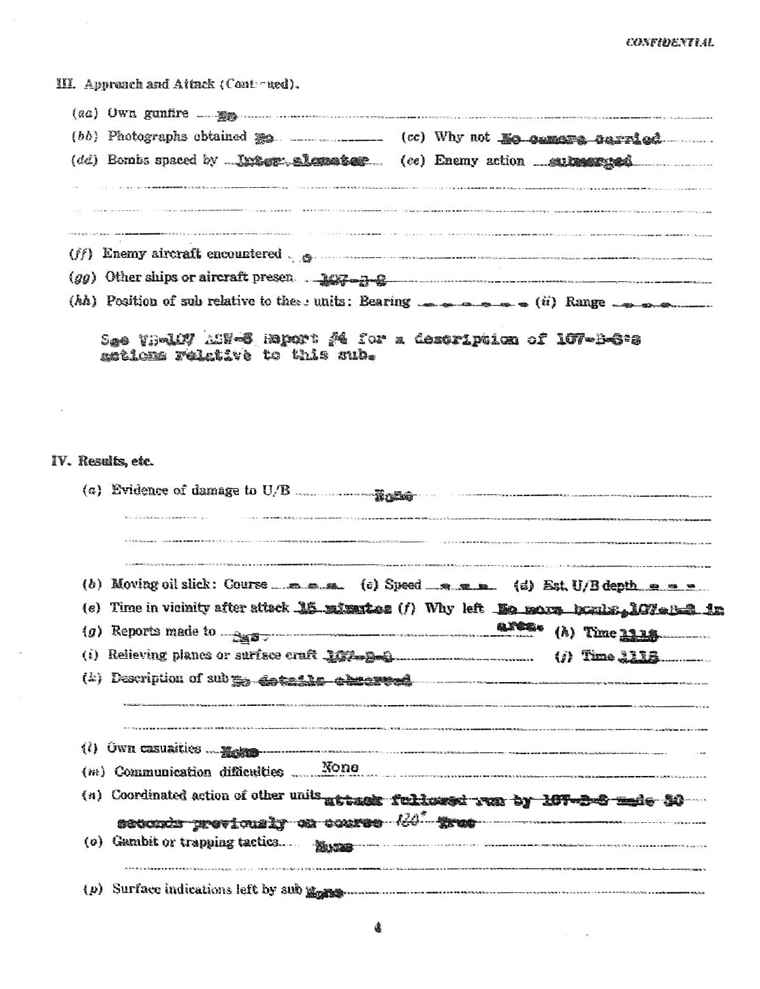
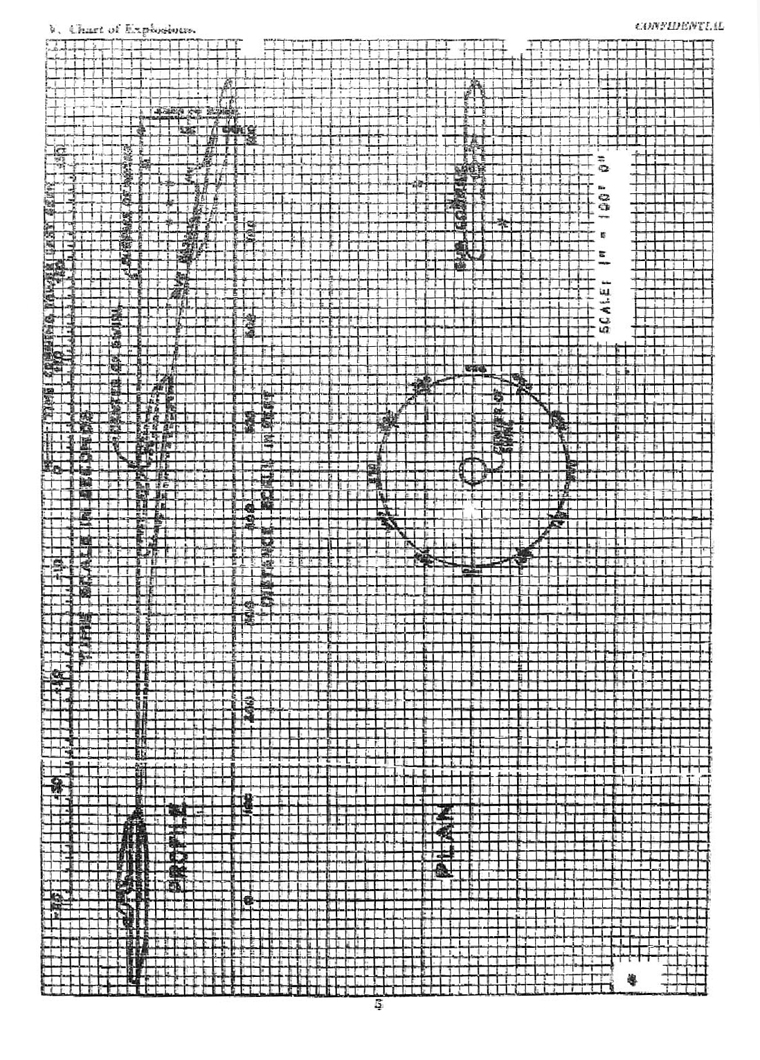
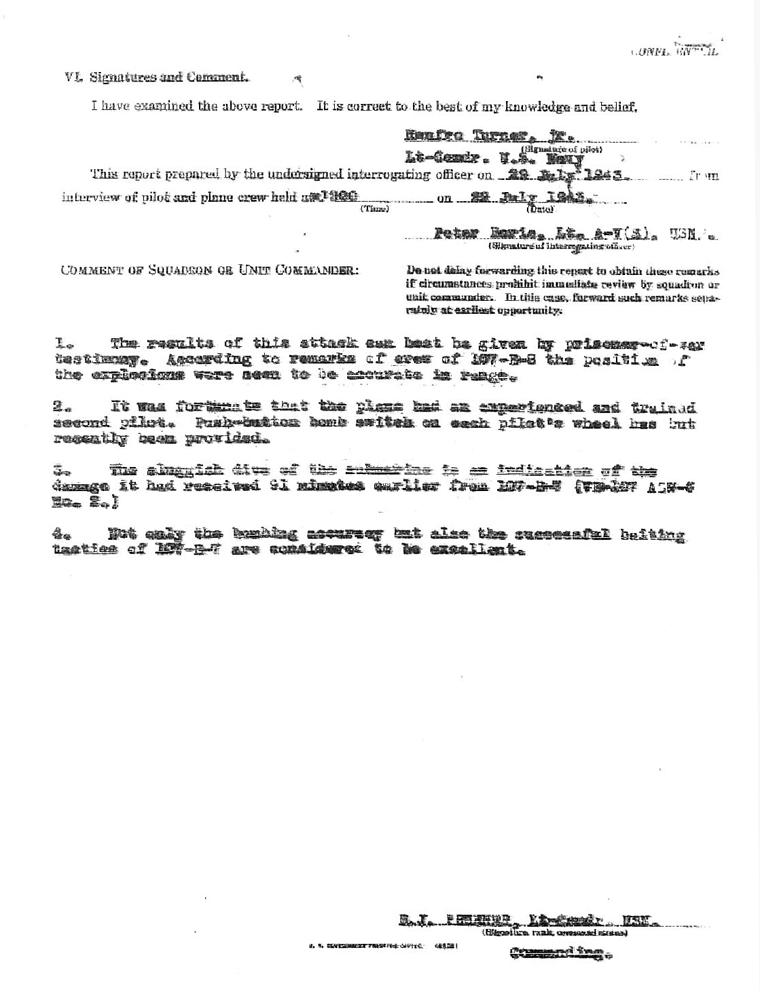
107-B-8 LTJG John Burton 22 July 1943 VB-107 ASW-6 #4
| This report covers LTJG Burton's attack in 107-B-8 (his depth charges failed to drop). U-598 submerged before LTJG Burton could make a second attack. |
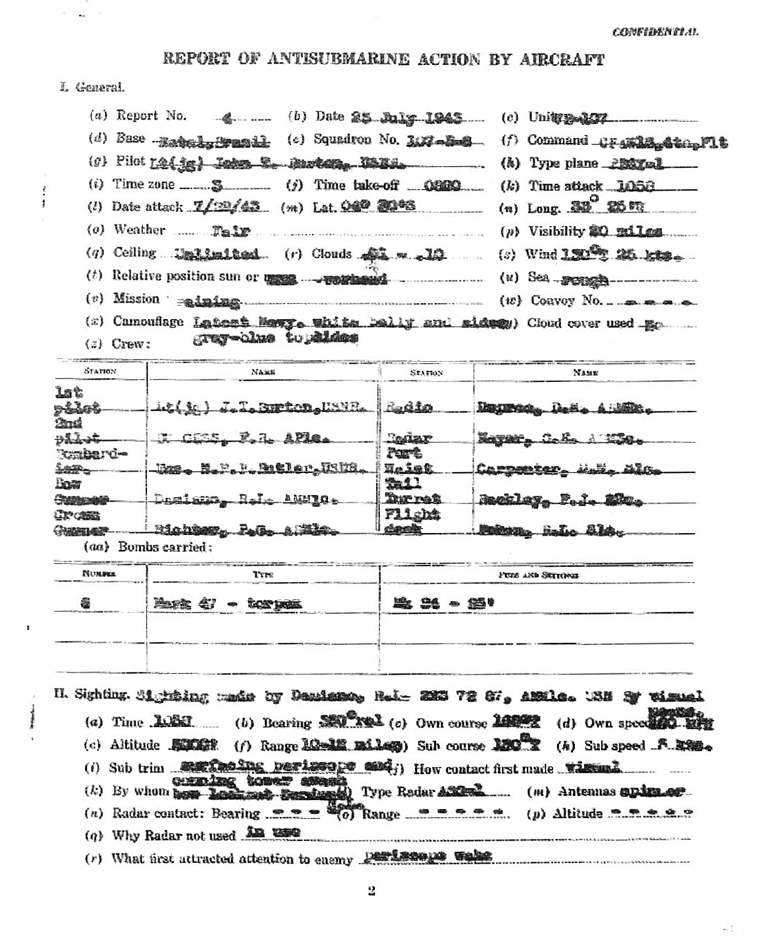
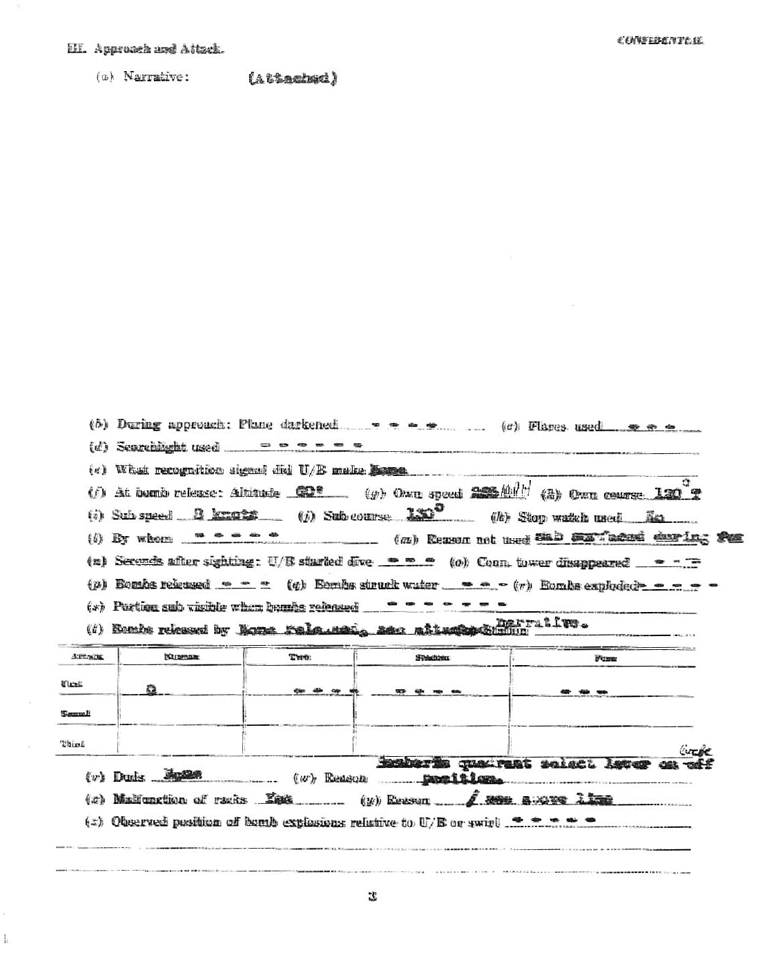
NARRATIVE |
||
Took off at 0815 from Natal on 22 July together with 107-B-7 on a training sweep. A possible sub was estimated in the area (050 00' S - 380 00' W). At 0940 radioman picked up a message from No. 7 that it had dropped on a sub at position 040 15'S - 330 05'W. Proceeded to position given but no evidence of attack or No. 7 were seen. Began flying a 25 mile square from position. While on upper leg of square, picked up blip on radar so turned toward it. I soon sighted No. 7 visually. No. 7 was flying course 1300T, we were on course 1650T at 500 feet, speed 160 MPH. No. 7 crossed plane's course to port beam. Then bow lookout (Damiano) reported sighting a wake about 10 or 12 miles away, so started down heading toward it. The sub was first seen to be surfacing, with periscope and conning tower showing, but them was soon to start down in a shallow dive. Stern of sub was never seen to break water. Pilots first reaction was to decrease power so as to lose altitude more rapidly, so momentarily pulled throttles back but then he realized he couldn't reach the sub soon enough to attack, so applied maximum power, and increased angle of glide. As plane came within range, bow gun and crown turret opened fire on the conning tower. Sub submerged about 5 seconds before plane passed over about 15 to 20 feet forward of conning tower. Intervalometer setting 60 ft at 230 MPH. Throttle button was pressed, bombs failed to release because the bombardier had left the select lever on the bombers quadrant in locked position. After pulling out of sun, observed 107-B-7 making run about 30 seconds after No. 8's run. Noted number 7's drop from about 2400 relative to him, his released appeared to be right on the course of the sub. Circled area for 50 minutes then commenced to fly a 25 mile square around point of attack. Remained in area until 1345, when relieved by 107-B-5. Returned to base, landing at 1500 |
||
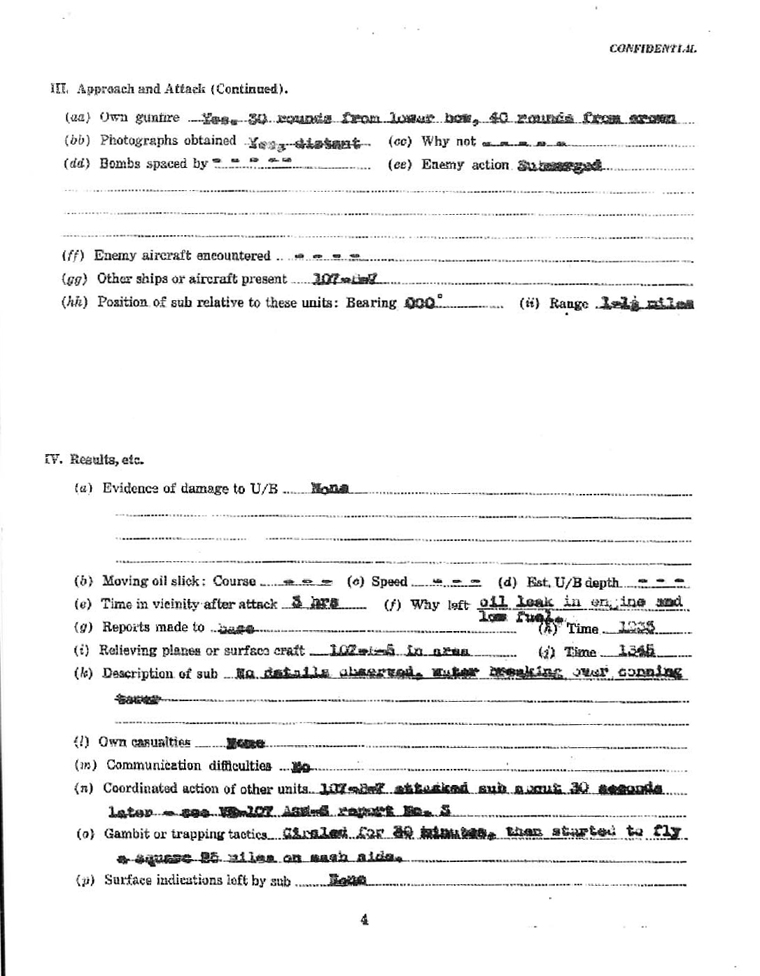
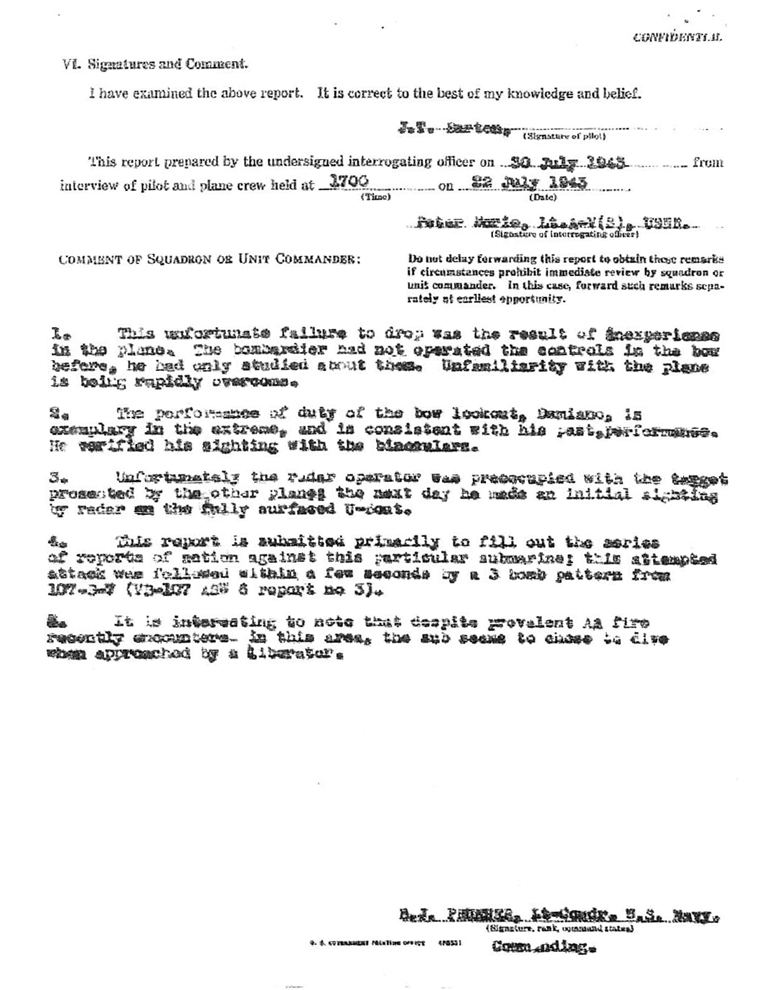
107-B-12 LTJG Charles Baldwin 23 July 1943 VB-107 ASW-6 #5
| This report covers LTJG Baldwin's sighting and attack on U-598 after the boat was held down through the night of 22/23 July. On his first attack his depth charges failed to drop. On his second attack his depth charges were dropped safe but two explosions were observed. U-598 appeared to be down by the stern and did not submerge after this attack. |
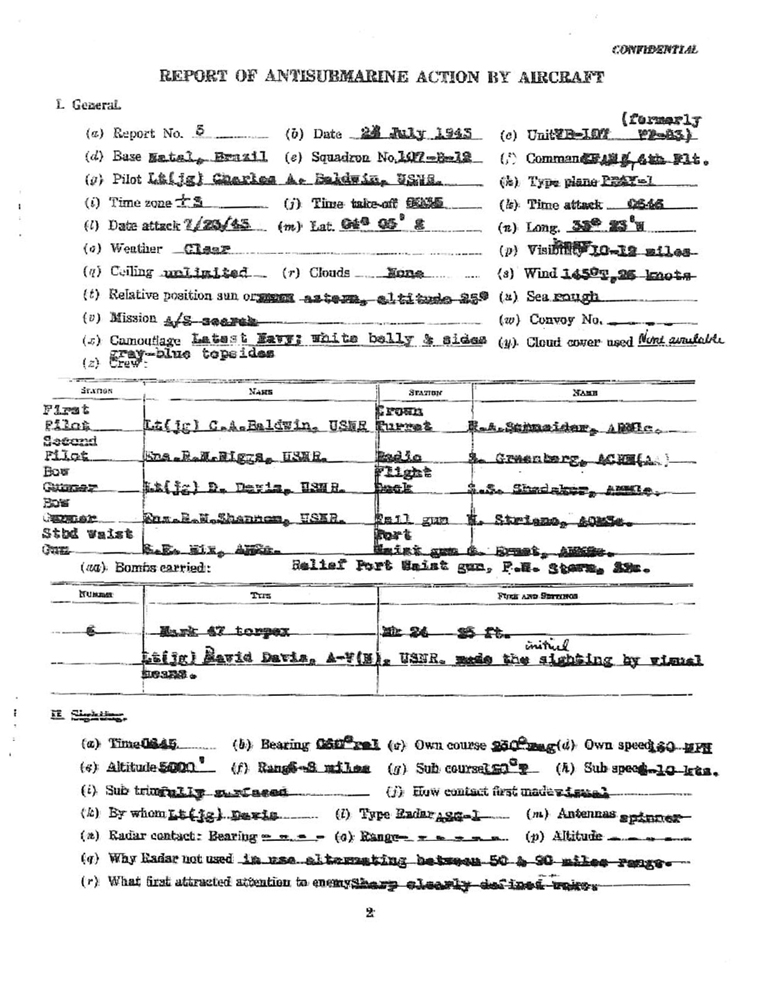
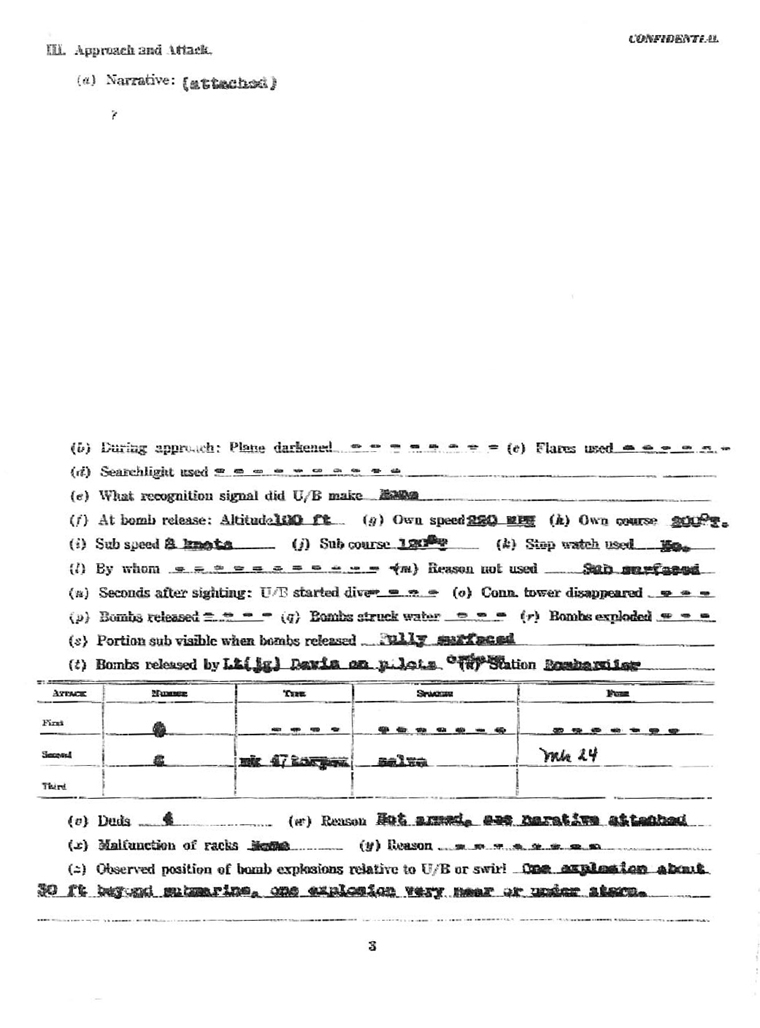
UNITED STATES ATLANTIC FLEET |
||
BOMBING SQUADRON ONE HUNDRED SEVEN |
||
NARRATIVE |
||
Took off at 0035, 23 July, from Natal to conduct a square search and to continue hold-down of sub sighted and attacked the previous day by 107-B-7 and 107-B-8 at 040 30 S 330 25' W. During darkness flew at 2300 ft. At sunrise, went up to 5000 ft. After flying north on east leg of square changed course to 2300 mag. so as to cover center of area to be searched, and about 0645 LT(jg) Davis sighted visually a sharp clearly defined wake, about 6 to 8 miles on the beam. After starting right turn, pilot was able to identify a submarine on course 1200 T making between 8 and 10 knots. Although the radar was turned on, no indication was observed. Position 040 05'S 330 25'W. Plane started down immediately with throttles all the way back, no power at 250 MPH, down wind, with sun at back of plane. Subsequently turned on power, target angle of 015; course 300 mag, speed about 240 MPH, altitude 75 ft. Plane apparently not sighted by sub until this point. Bow gun and crown turrets started firing, and obtained hits. Pilot pressed pickle to release all 6 bombs, with intervalometer set for 60 ft. spacing at 200 knots, but bombs failed to release. Subsequent investigation showed that while Lt(jg) Davis and Ensign Shannon in the bow compartment were endeavoring to unship the bow gun, their violent movements inadvertently threw the rack selector switch (a two position switch) on the bomb release panel from B7 (the correct rack) to B-5, with the result that the proper racks were noted tripped. The switch had been properly set prior to the attack.* After this fiasco, the pilot immediately started a sharp turn to the left. At about this time, he noted light flak just forward of bow and just aft of the tail. He judged the flak to be from a 20 mm gun. Returning to the attack, he directed Lt(jg) Davis in the bombardiers compartment to release the bombs in salvo at his (the pilot's) direction. This time the attack was made at a target angle of 060 (see diagram appended), and the plane crosses the sub forward of the conning tower at 220 MPH, full power on, altitude about 100 ft. Accurate fire was directed at the sub from the crown turret, the bow gun being out of ammunition, which was observed to keep personnel from emerging from the conning tower hatch. The bombs were dropped as ordered and although the charges were unarmed (both the pilot and the bombardier forgot in the excitement that a salvo release would release the depth charges unarmed unlike the PBY-5A with which the squadron had previously been equipped), two explosions were definitely observed and at least 1 or 2 bombs were seen to strike the deck forward of the conning tower, and then roll off. One explosion was about 30 feet beyond the sub, and the other very near to it or underneath its stern. The stern was seen to rise from the water and then settle slowly. A noticeable amount of oil began to emerge. After the attack, the pilot made another left turn and was |
||
* This material defect has been reported to Comairlant by despatch 24 of July |
||
- 1 - |
||
NARRATIVE CONTINUED |
||
able to observe a large depth charge residue. (While in this turn the port waist gun was seen to make some hits in the conning tower.) The sub was still putting out a large amount of AA fire, mostly astern of the plane, which followed it until it was out of range. No hits were made on the plane. |
||
The plane then circled the sub out of gun range and immediately began trying to establish contact with other planes in the area, and to send out MO's. In 15 minutes contact was made with 107-B-15. The plane remained in the area hoping for an opportunity to aid in a coordinated attack on the sub, in order to draw some of its AA fire. The sub, although apparently down by the stern, and with little way on, continued to fire whenever the plane approached closer. About 0828, 107-B-6 and 107-B-8 made an attack on the sub. 107-B-12 was then about 3 or 4 miles distant. The crew of the plane observed 107-B-6 first attack the sub, whereupon the tail of the plane seemed to lift up, and it dove into the water. Immediately thereafter 107-B-8 was seen to attack the sub. Various survivors and a large oil slick were seen in the area when the sub had been. As 107-B-8 was in the area of the attack, and as the plane's fuel supply was low, it left the area about 0835, and landed at Natal at 0930. |
||
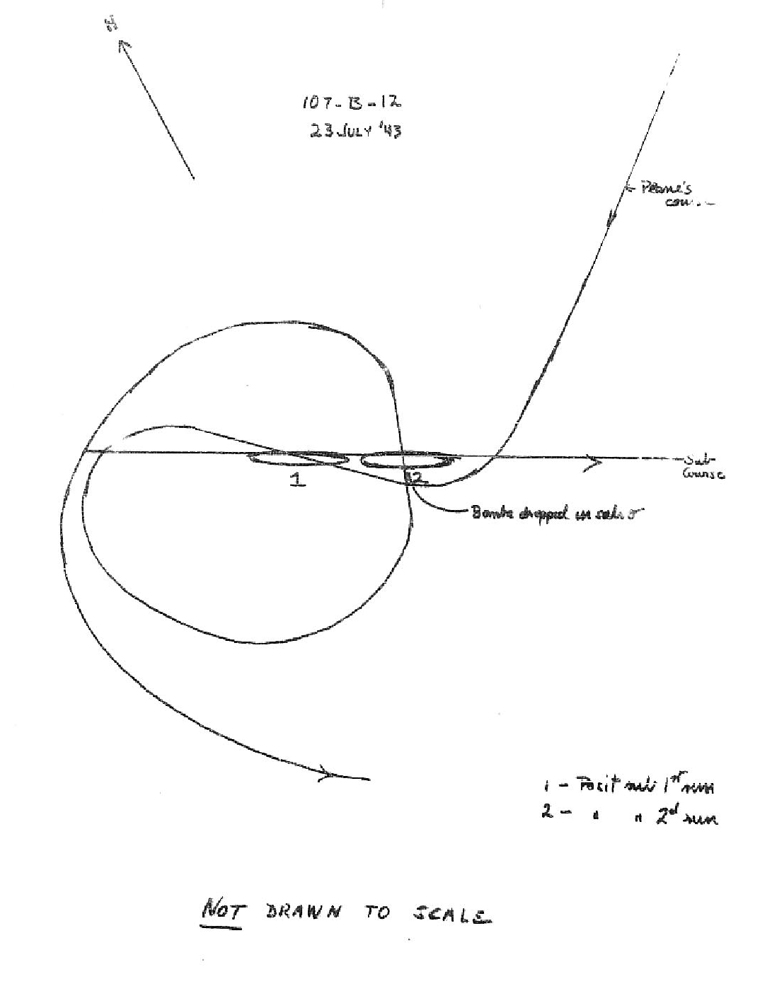
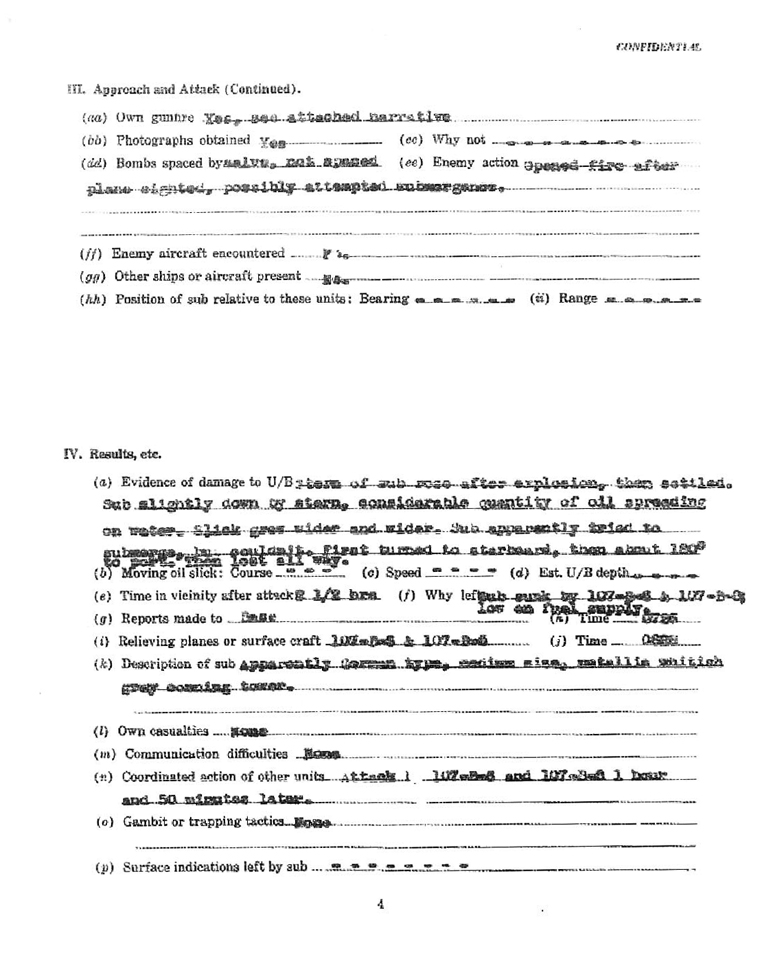
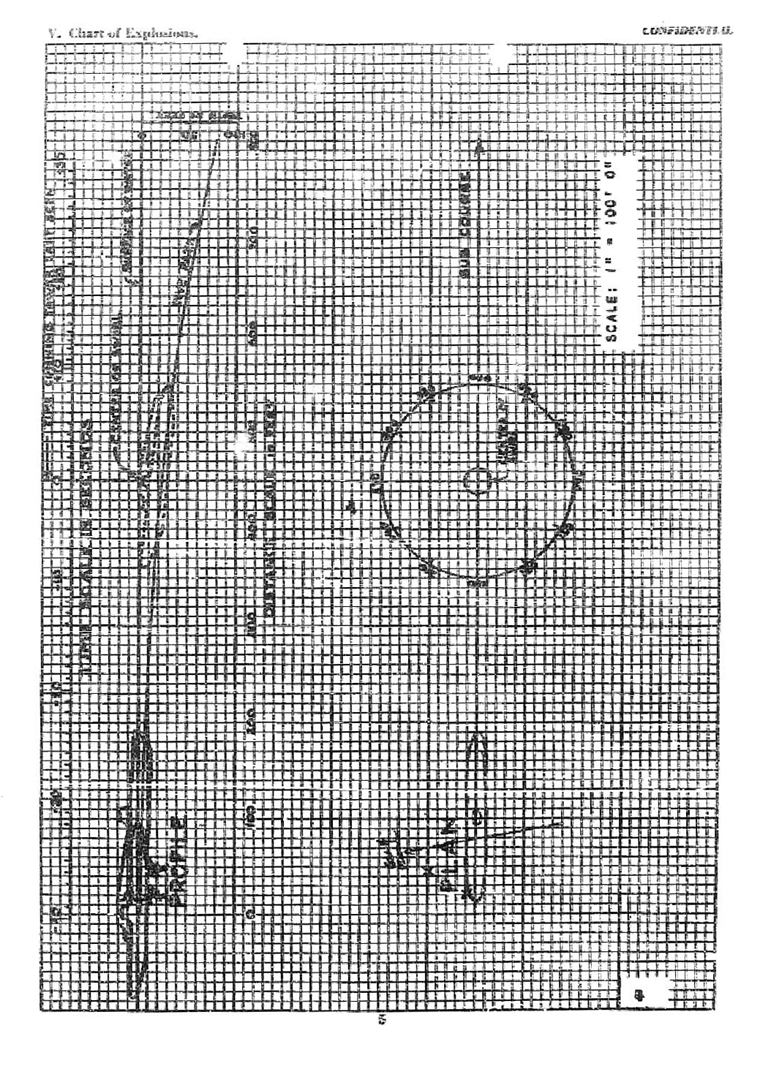
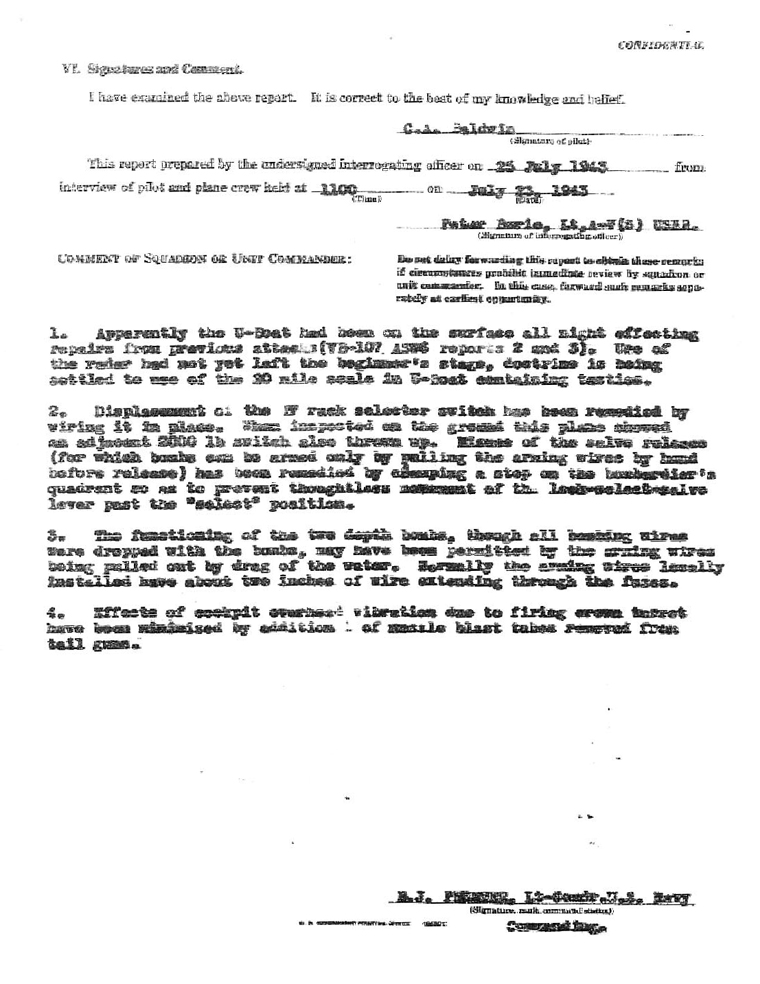
107-B-8 LT William Ford 23 July 1943 VB-107 ASW-6 #6
| This report covers the final attack on U-598 by LT Ford in 107-B-8. LT Ford arrived at the scene of 107-B-12's attack and sighted U-598 still surfaced. As he started his run, he observed LTJG Waugh in 107-B-6 attack the U-boat and immediately crash into the sea. Both LTJG Waugh and LT Ford's depth charges straddled the U-boat which sank quickly thereafter. |
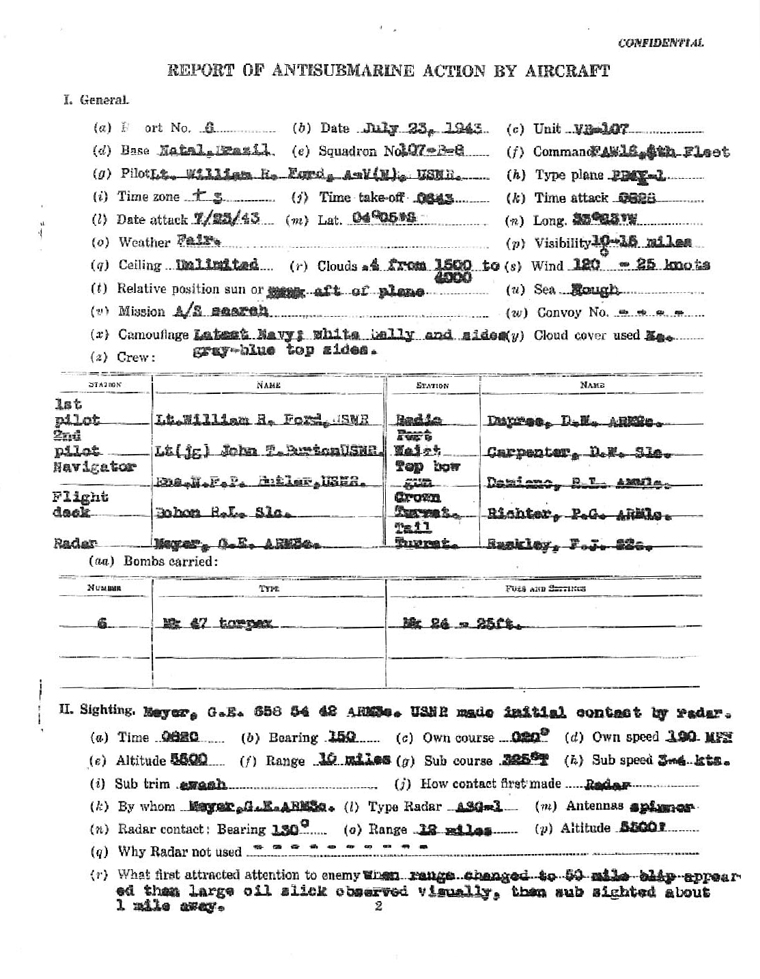
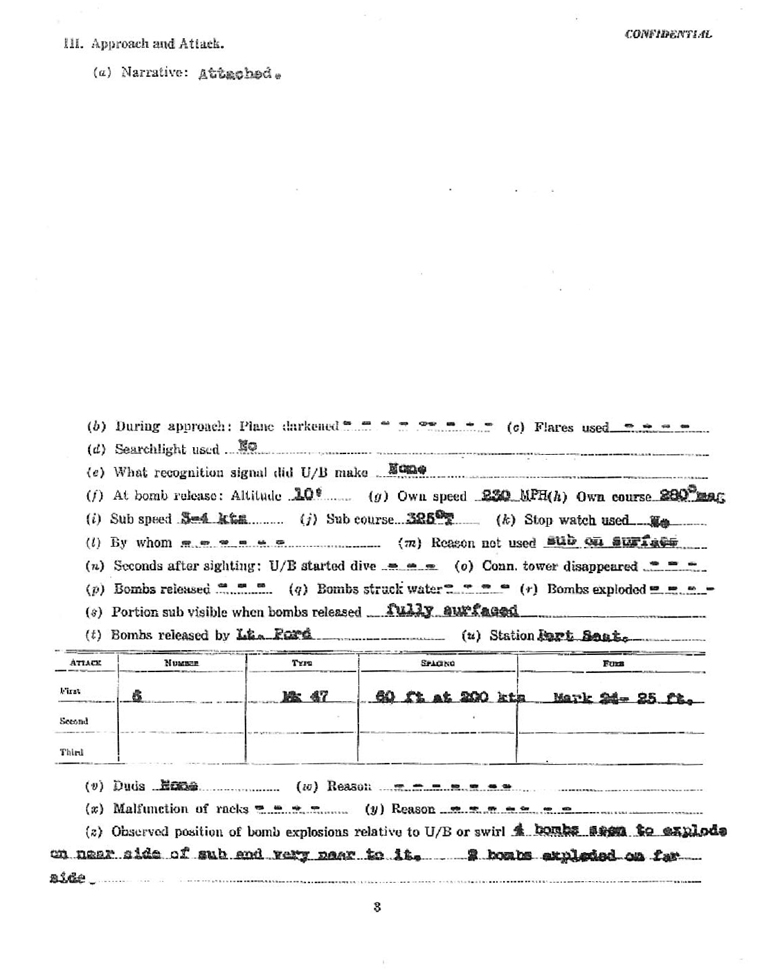
.PILOT'S NARRATIVE. |
||
Took off at 0645 Peter from Natal, to sweep together with 5 other planes (107-B5, 6, 7, and 15 and 127-B-1) the area in vicinity of 040 30'S 330 25'W, where a sub had been sighted and attacked by 107-B-7 the previous day. At 0710 received contact report from 107-B-12 who had been conducting an all night hold-down over point of previous attack. As we were further most plane from contact continued on course until time of course change in plan at which time (0725) received position and attack report of 107-B-12. Altered course to contact area and notified base. We were at 5 to 6000 feet, auto rich, 40 inches, 2300 RPM, indicated 200 MPH, ETA POSIT 0805. At 0820 encountered another 107 plane (not #12) altered course to Northwest (exact course unknown) and again picked up a plane on radar, (not #12). After investigating altered course to S.E. at approximately 0820 picked up a radar contact at 20 miles, bearing about 1300 relative changed course toward it. At 10 miles sighted oil slick and sub in another slick moving slowly on course about 3400T. Rang alarm for battle stations and for bomb bay doors to be opened and bombs set to drop. Altered course southward to put sun on quarter for attack, dropped to 1500 feet. Since 0805 we had been in voice control with our #12, 7, 15 and 6. As we made a sharp right turn to make attack dive, crew noticed another plane in attack run on sub approximately 1000 relative to our attacking course. This plane was subsequently identified as 107-B-5. We were about 2-1/2 miles from sub at this time. Saw other plane open up with machine gun fire, which cut through the water right across the sub. This other plane dropped a perfect straddle of bombs across the sub from about 60 feet. As the plane cleared the stern of sub it seemed to pause for an instant and continued on course into the sea. Immediately after plane's drop, our bow gunner Damiano observed a bright white flash just aft of conning tower. At this time we were well straightened out into run on course (on estimate) of 3000 mag. The geyser of water from the other plane's bomb explosion had just thinned and in the center we saw the conning tower well out of the water, and we opened up with machine guns. Aimed plane directly for conning tower, and dropped at 0829, a stick of 6 bombs set for 60 feet at 200 knots, our approximate speed being 230 MPH. Crossed conning tower at very low altitude through heavy spray, and pulled out into a left turn to circle and investigate. The sub was not in sight. Where the plane crashed was a boil of water, and on closer observation |
||
.PILOT'S NARRATIVE. |
||
CONTINUED |
||
saw life rafts and oxygen bottles from plane, then passed over oil slick and powder residue from sub attack and saw life rafts and about 10 or 12 survivors in water. Sent report to base about plane crash and attacks with our new position. Set up on 414 to send MO's and called 107-B-5, 107-B15, 107-B-7 to area. 107-B-7 relieved us. When we left area there were four life boats, 2 inflated with men, one inflated empty, and one uninflated. U.S.S. Seneca was encountered enroute to base. Landed at 1115. |
||
